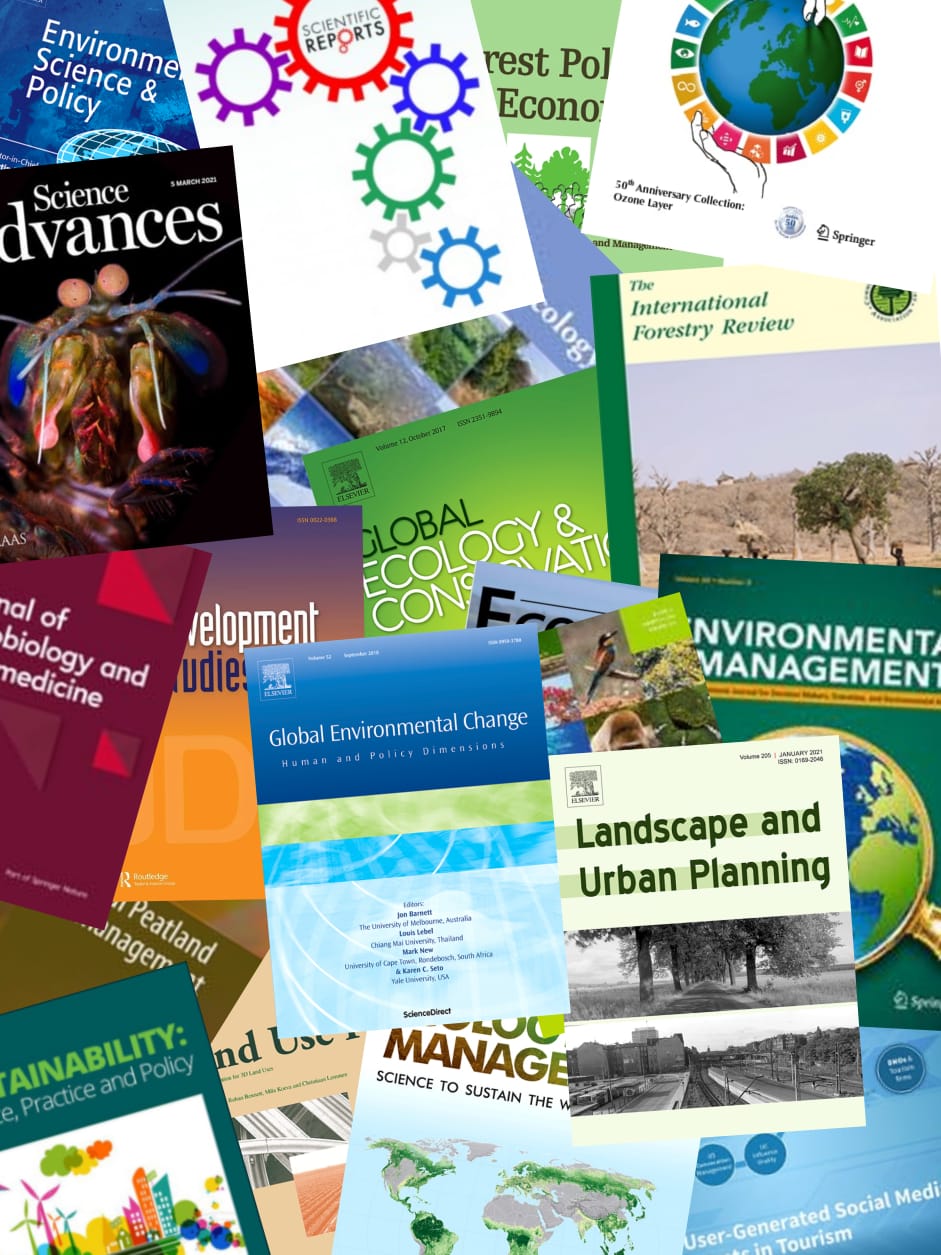Land use changes and land use intensification are considered important processes contributing to the increasing concentrations of the greenhouse gases nitrous oxide (N sub(2)O) and methane (CH sub(4)) and of nitric oxide (NO), a precursor of ozone. Studies on the effects of land use changes and land use intensification on soil trace gas emissions were mostly conducted in Latin America and only very few in Asia. Here we present results from Central Sulawesi where profound changes in land use and cultivation practices take place: traditional agricultural practices like shifting cultivation and slash-and- burn agriculture are replaced by permanent cultivation systems and introduction of income-generating cash crops like cacao. Our results showed that N sub(2)O emissions were higher from cacao agroforestry (35 plus or minus 10 [mu]g N m super(-2) h super(-1)) than maize (9 plus or minus 2 [mu]g N m super(-2) h super(-1)), whereas intermediate rates were observed from secondary forests (25 plus or minus 11 [mu]g N m super(-2) h super(- 1)). NO emissions did not differ among land use systems, ranging from 12 plus or minus 2 [mu]g N m super(-2) h super(-1) for cacao agroforestry and secondary forest to 18 plus or minus 2 [mu]g N m super(-2) h super(-1) for maize. CH sub(4) uptake was higher for maize (-30 plus or minus 4 [mu]g C m super(-2) h super(-1)) than cacao agroforestry (-18 plus or minus 2 [mu]g C m super(-2) h super(- 1)) and intermediate rates were measured from secondary forests (-25 plus or minus 4 [mu]g C m super(-2) h super(-1)). Combining these data with results from other studies in this area, we present chronosequence effects of land use change on trace gas emissions from natural forest, through maize cultivation, to cacao agroforestry (with or without fertilizer). Compared to the original forests, this typical land use change in the study area clearly led to higher N sub(2)O emissions and lower CH sub(4) uptake with age of cacao agroforestry systems. We conclude that this common land use sequence in the area combined with the increasing use of fertilizer will strongly increase soil trace gas emissions. We suggest that the future hot spot regions of high N sub(2)O (and to a lesser extend NO) emissions in the tropics are those areas where climatic and edaphic conditions allow for intensive agriculture. This scenario is probably preferable over the alternative of agriculture extensification, which would imply a dramatic increase in deforestation rates with accompanying CO sub(2) emissions.
View source
Keyword(s)
Pollution Abstracts, Ecology Abstracts, ASFA 2: Ocean Technology Policy & Non-Living Resources, Sustainability Science Abstracts, Citation No. G02003, agroforestry, cacao, deforestation, fertilizer, Indonesia, land use change., 0426 Biogeosciences: Biosphere/atmosphere interactions (0315), 0402 Biogeosciences: Agricultural systems, 0469 Biogeosciences: Nitrogen cycling, 0490 Biogeosciences: Trace gases, 1615 Global Change: Biogeochemical cycles, processes, and modeling (0412, 0414, 0793, 4805, 4912)., Methane, intensive farming, Forests, agricultural practices, Latin America, agriculture, Agrochemicals, Scientific research, Nitrous oxide, Zea mays, Ozone, Land use, cultivation, Fertilizers, Emissions, cash crops, Asia, Nitric oxide, Soil, hot spots, Tropical environments, Indonesia, Sulawesi, Burns, P 0000:AIR POLLUTION, D 04040:Ecosystem and Ecology Studies, M3 1010:Issues in Sustainable Development

